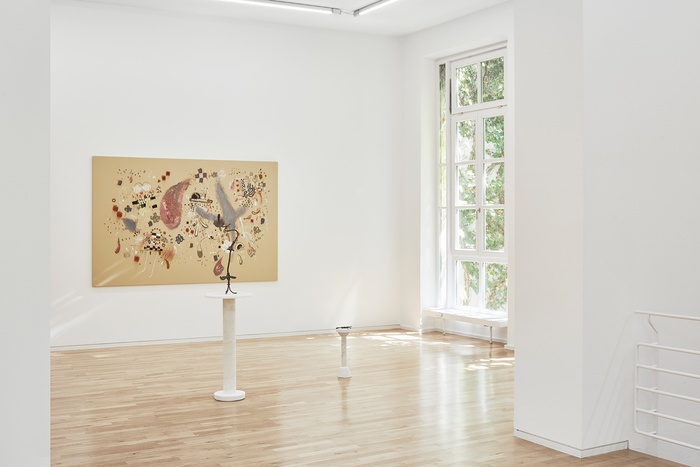
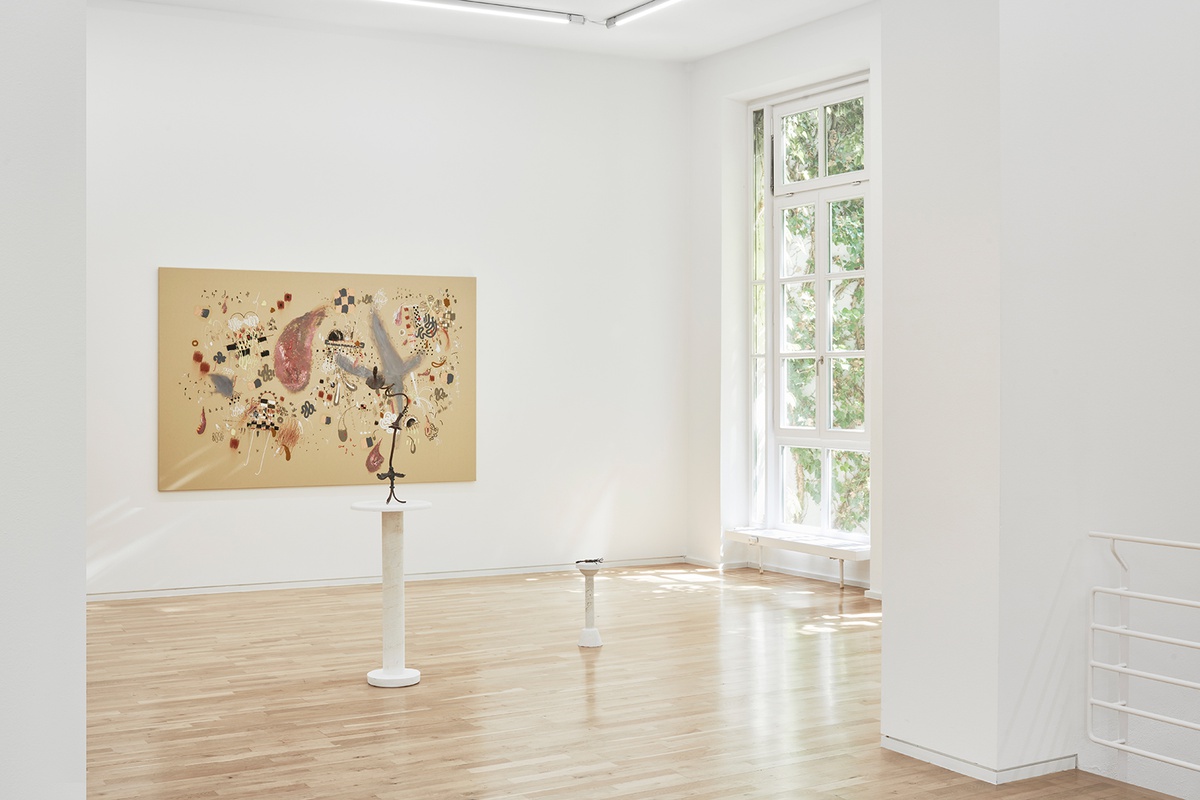
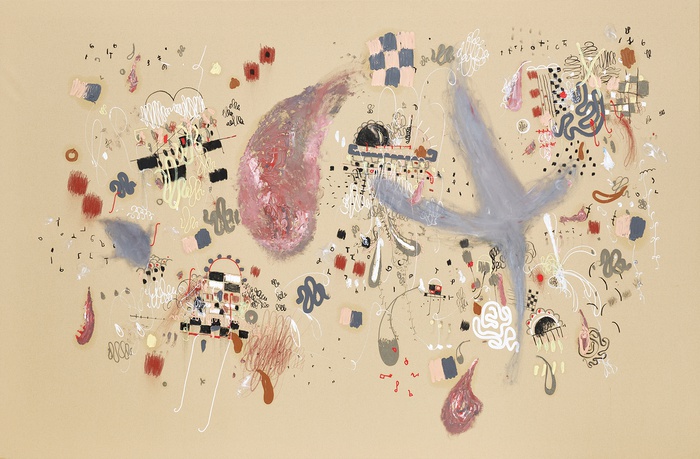
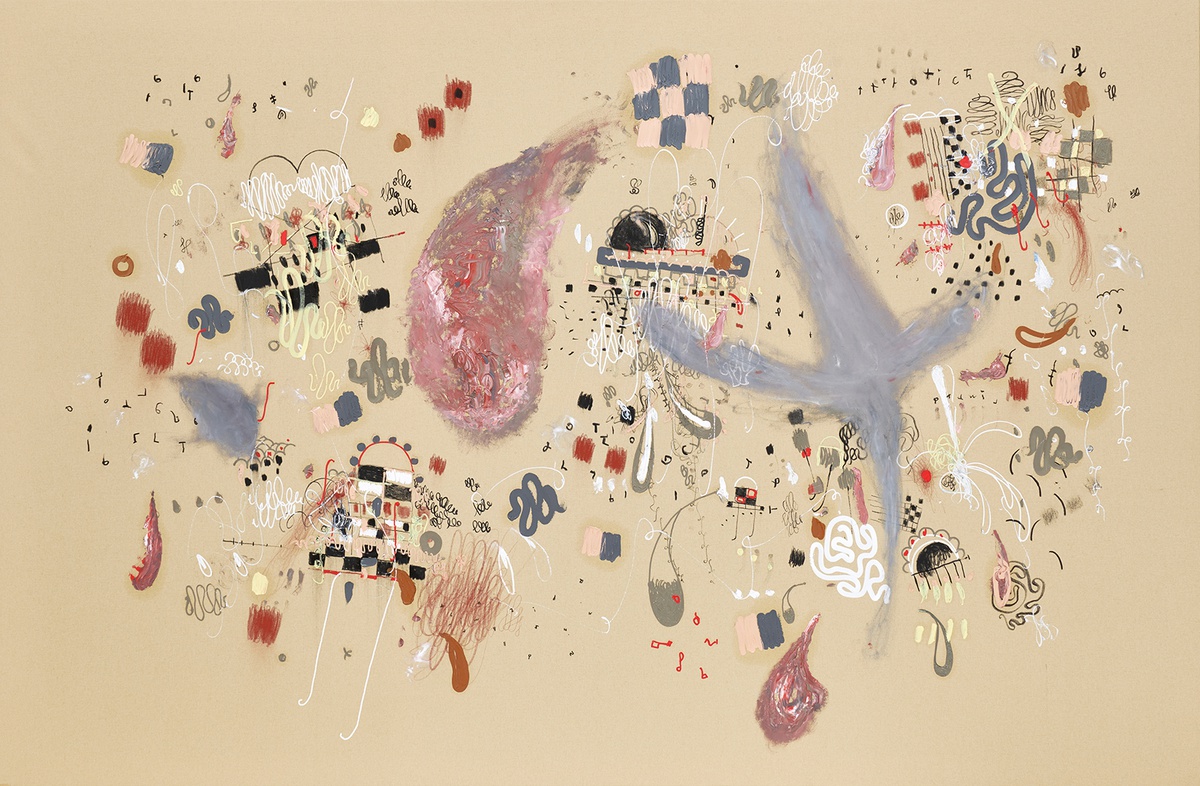

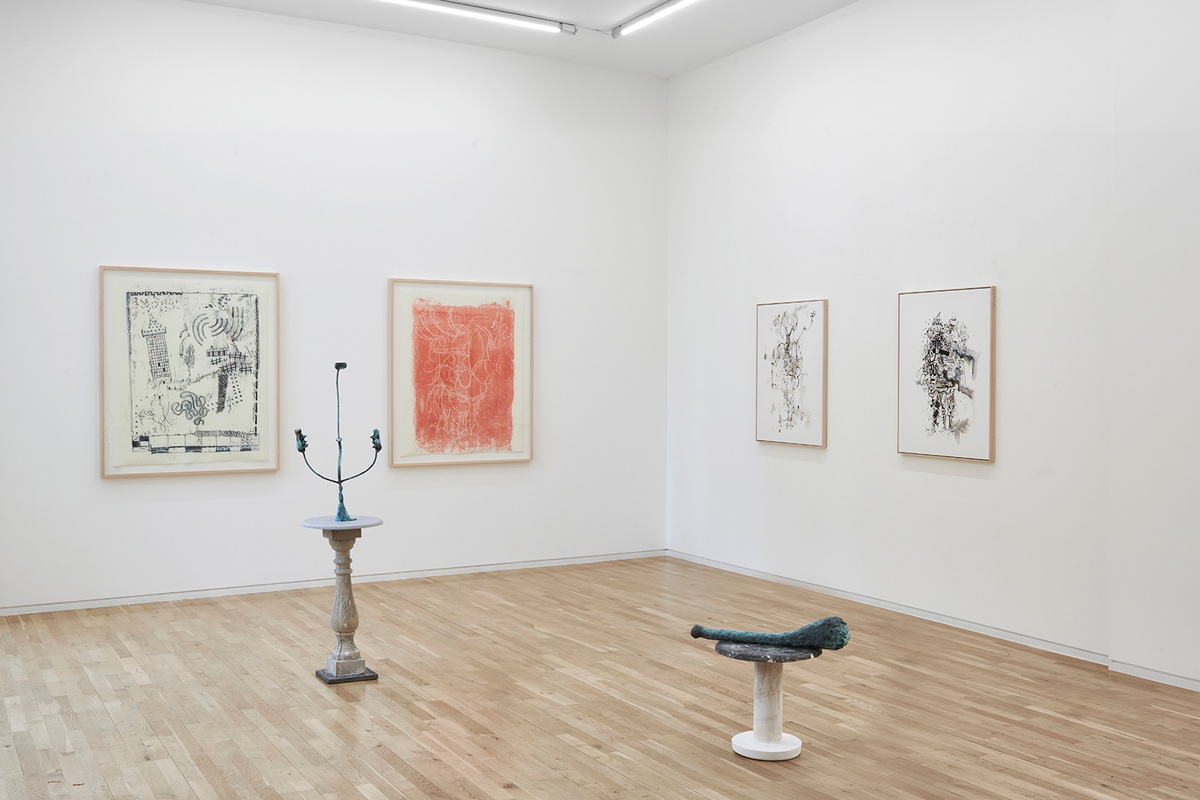
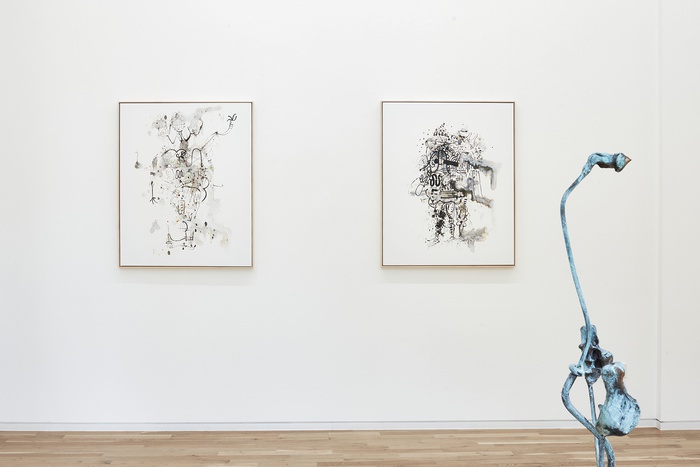

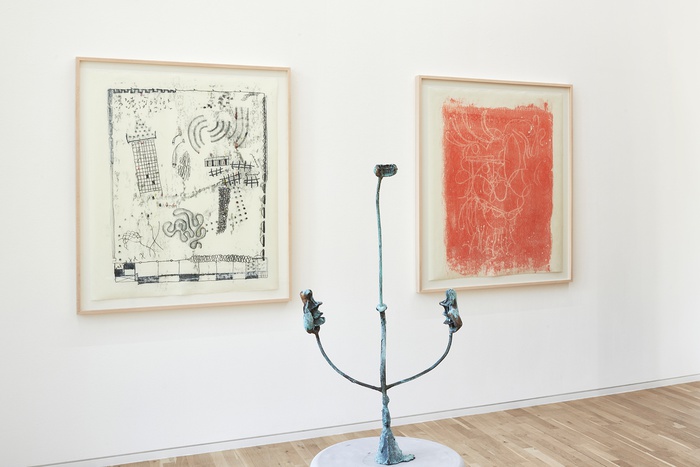
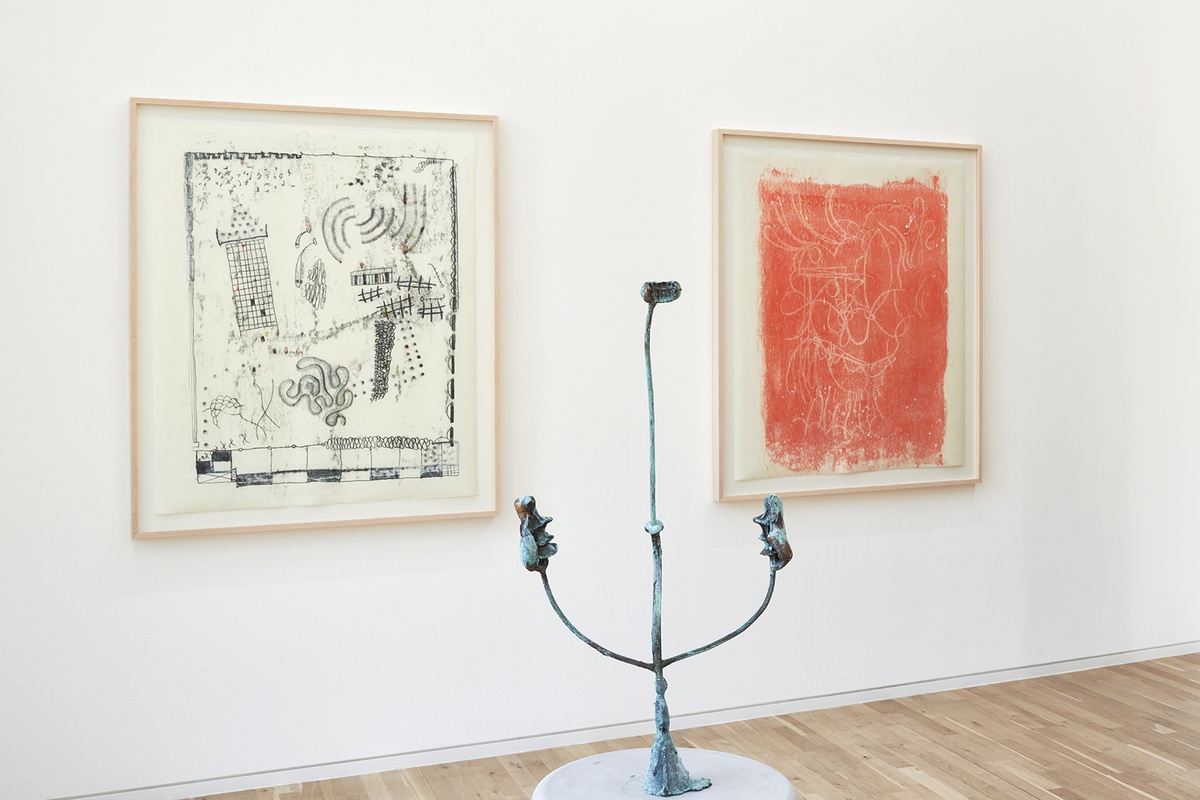
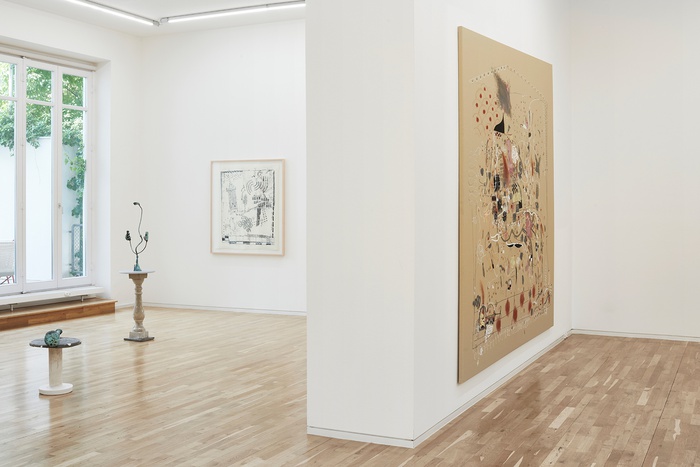
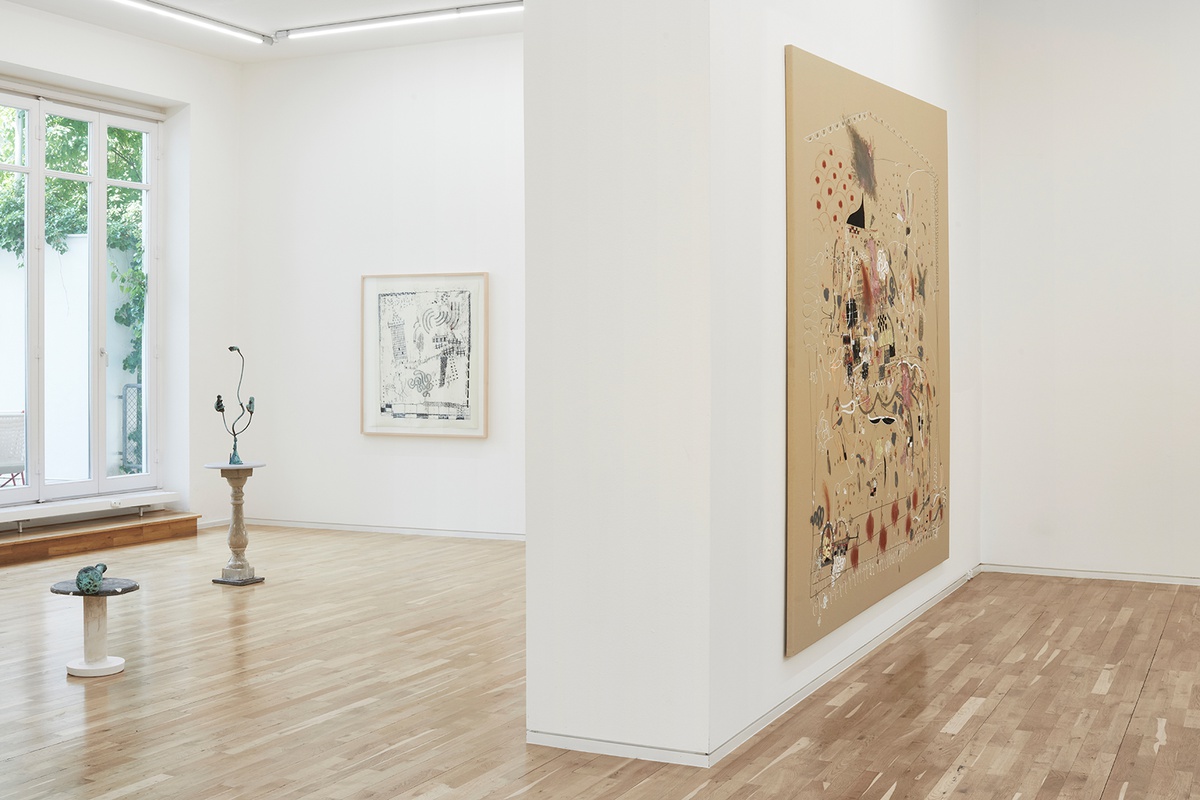
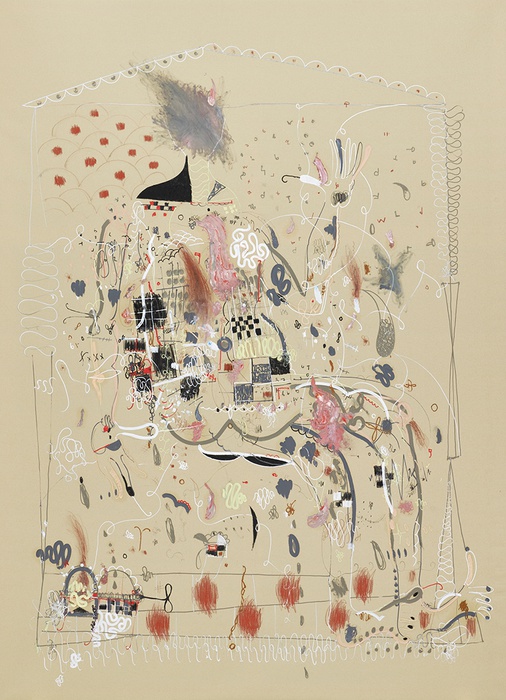
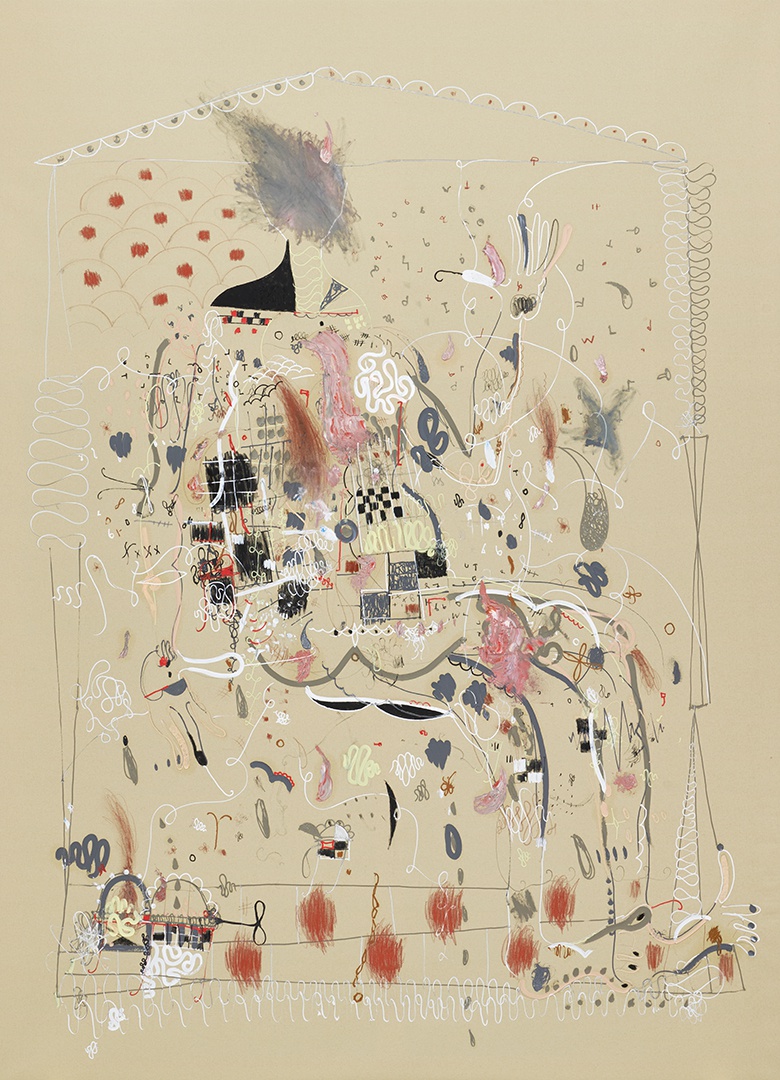
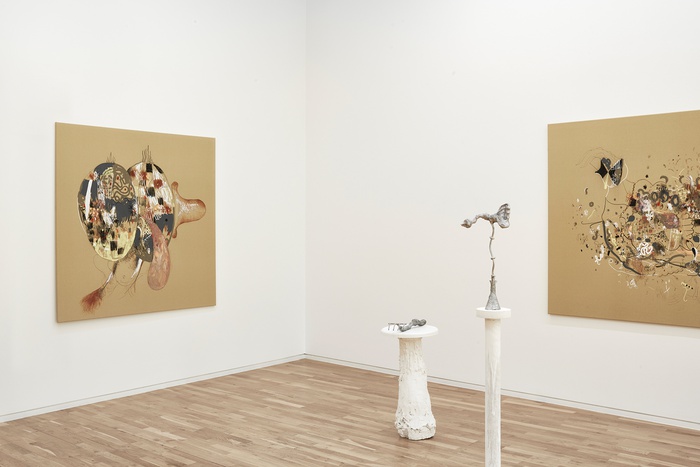
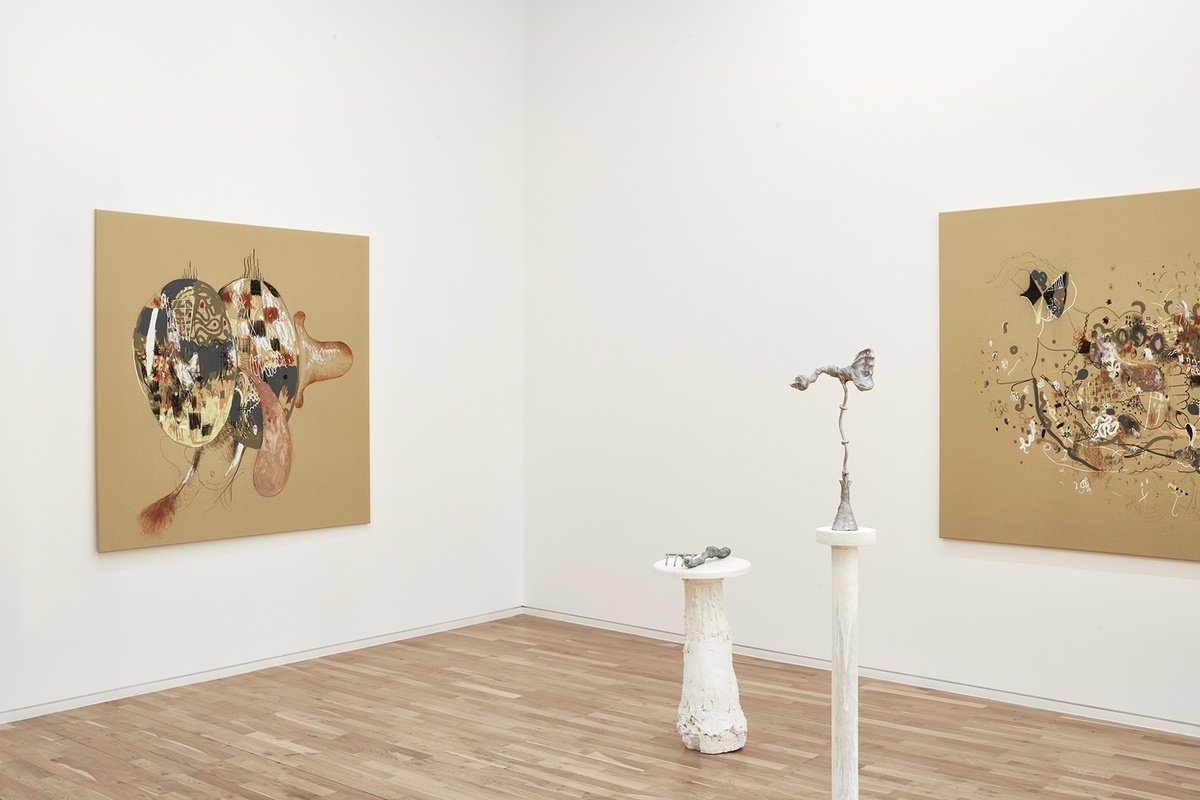
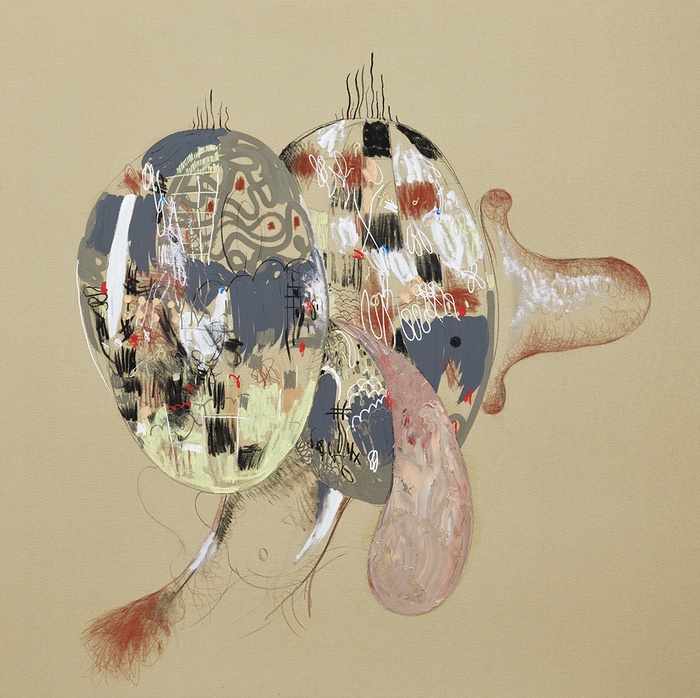
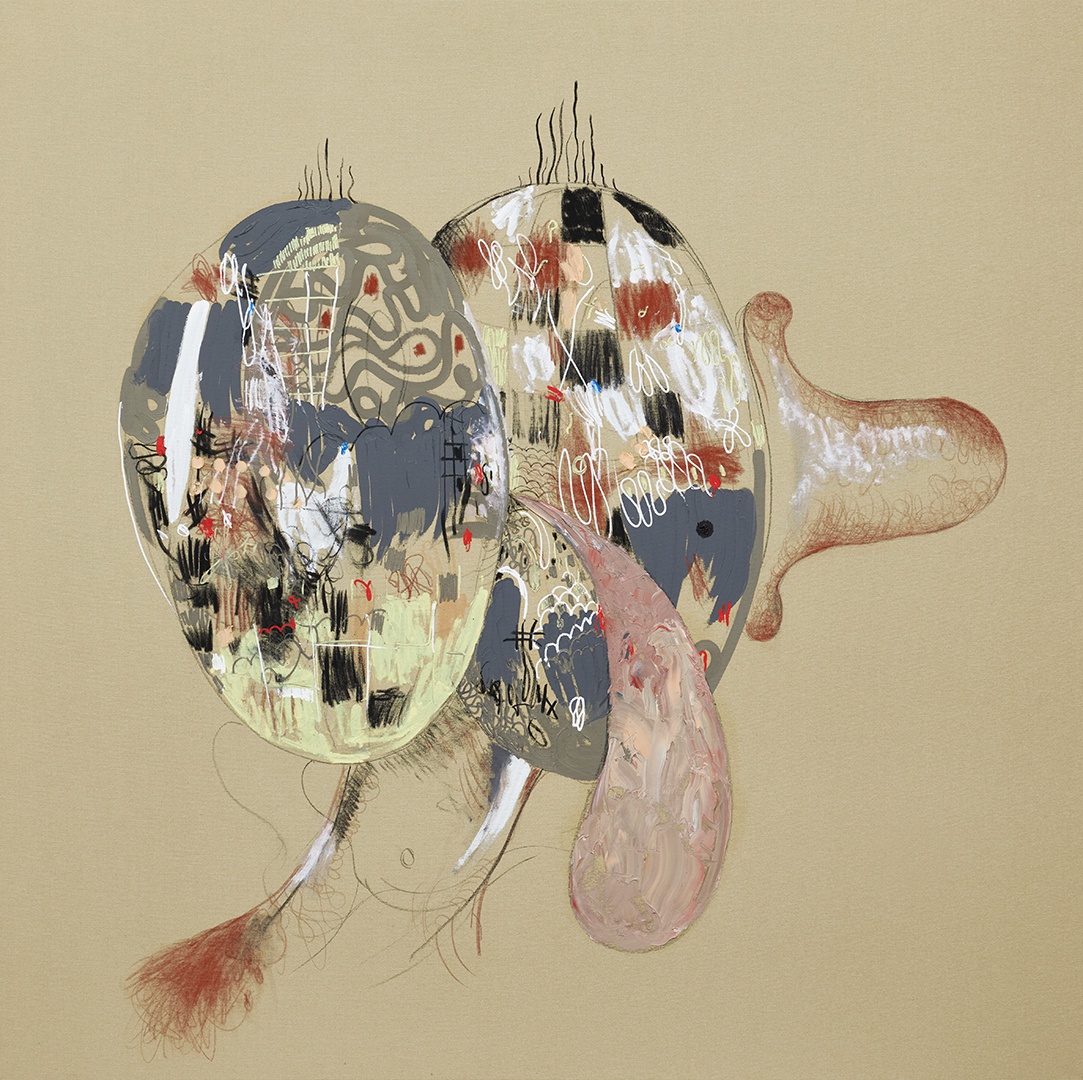
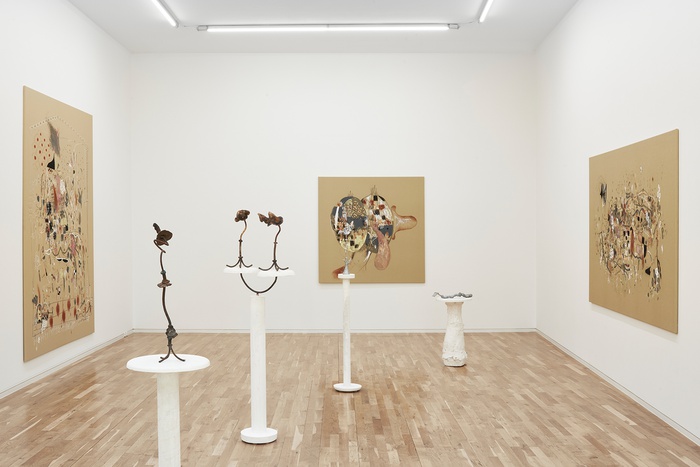
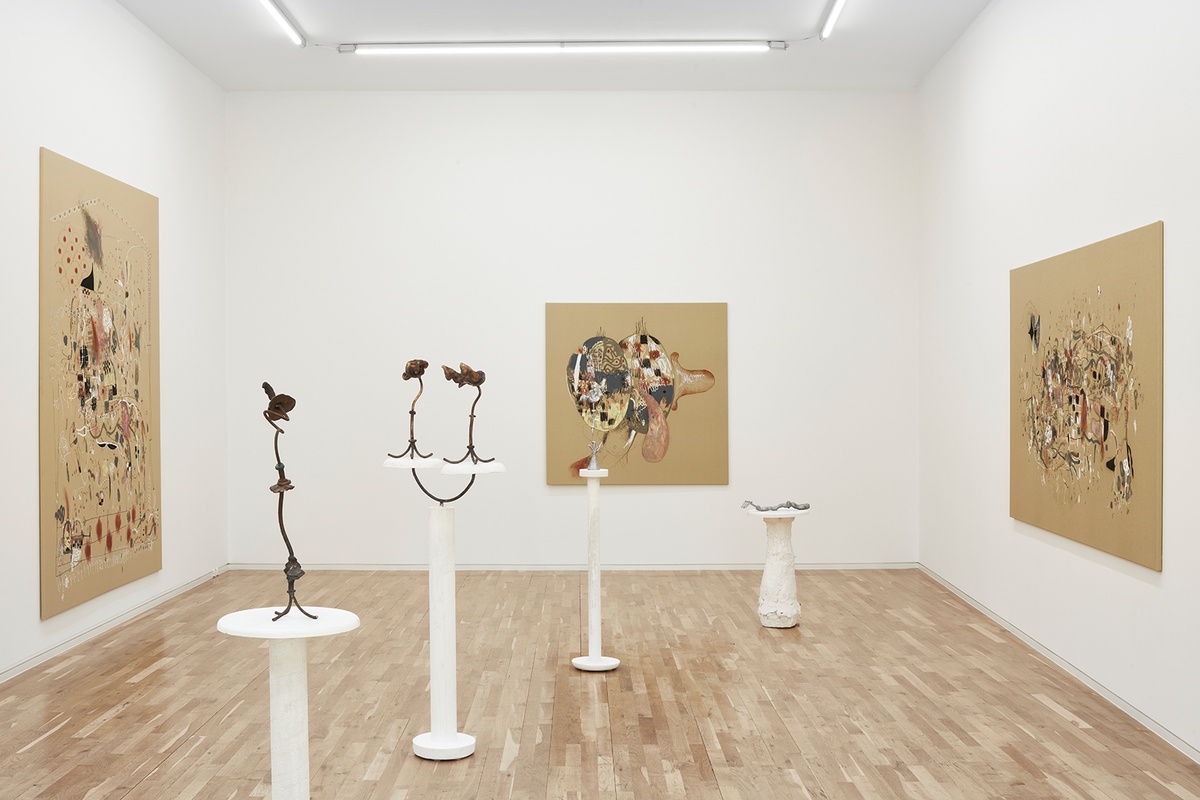
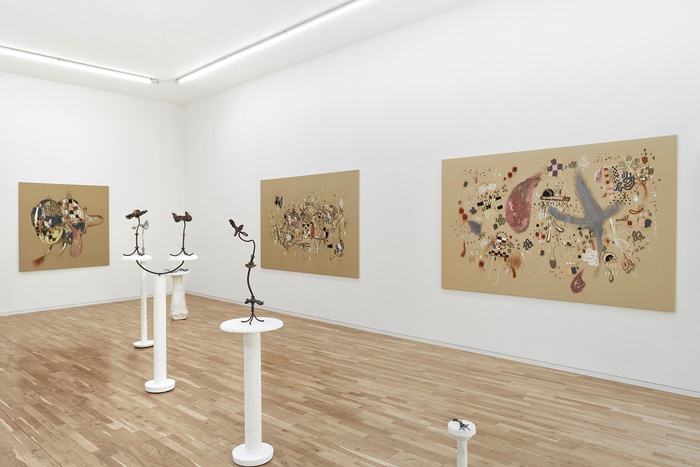
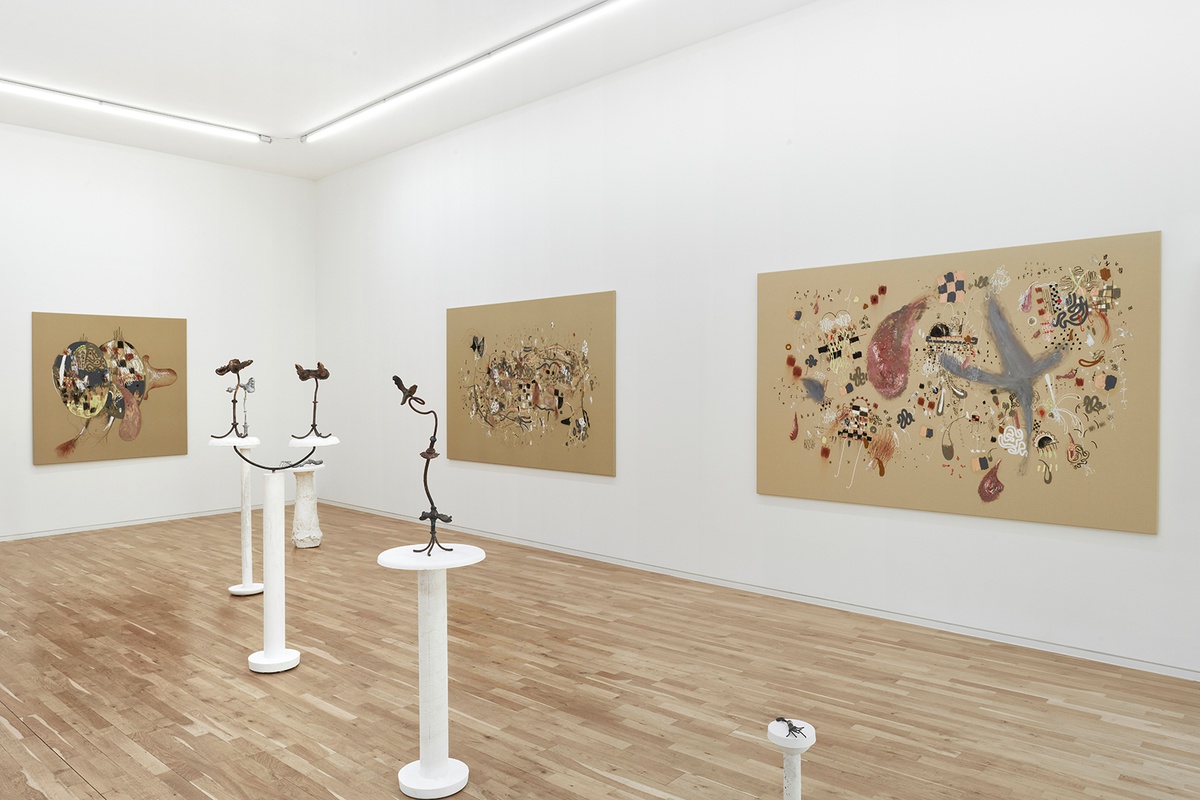
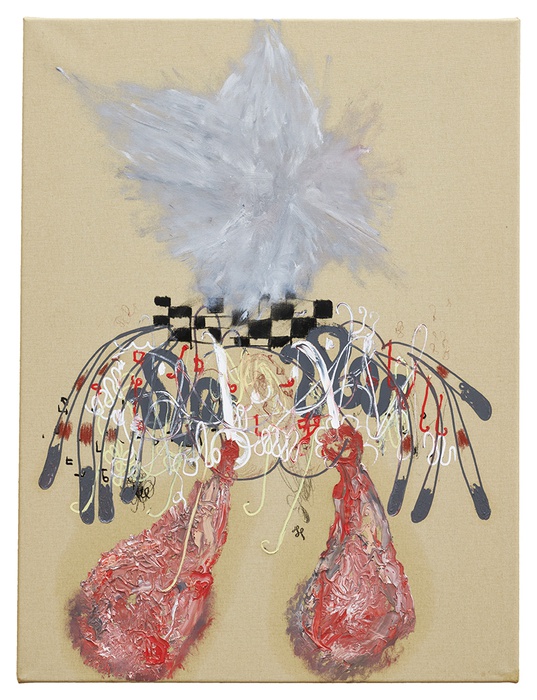
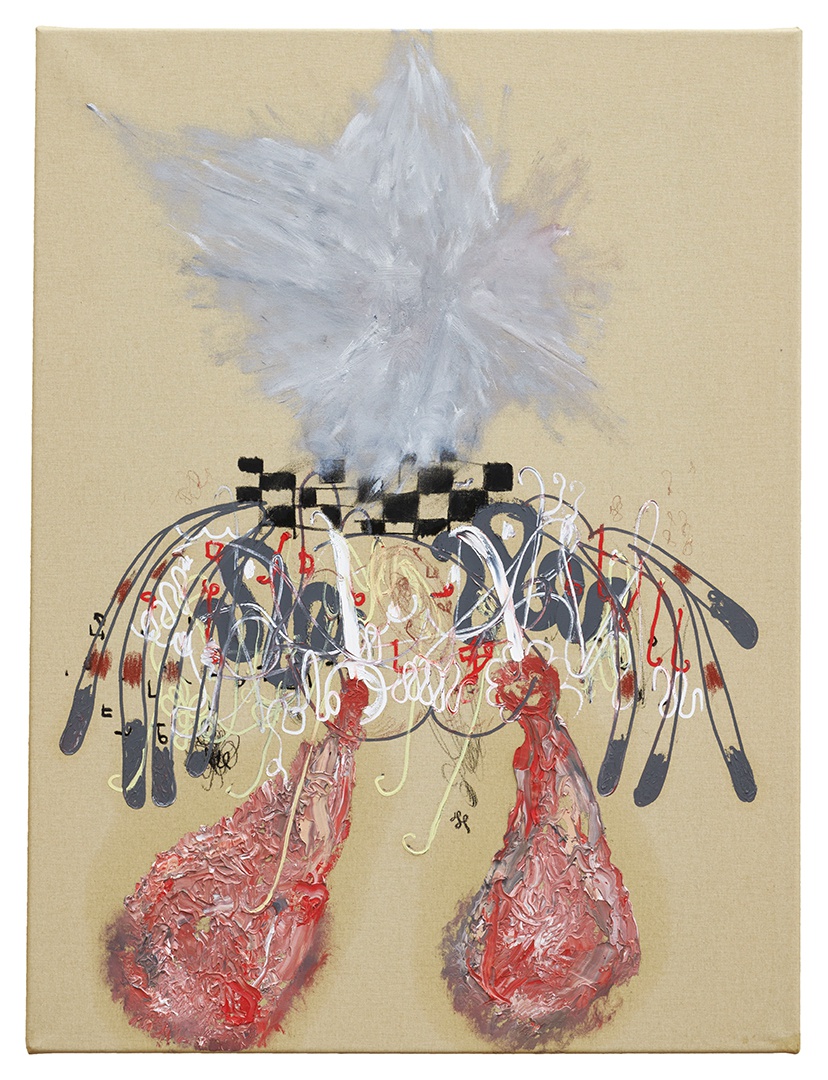
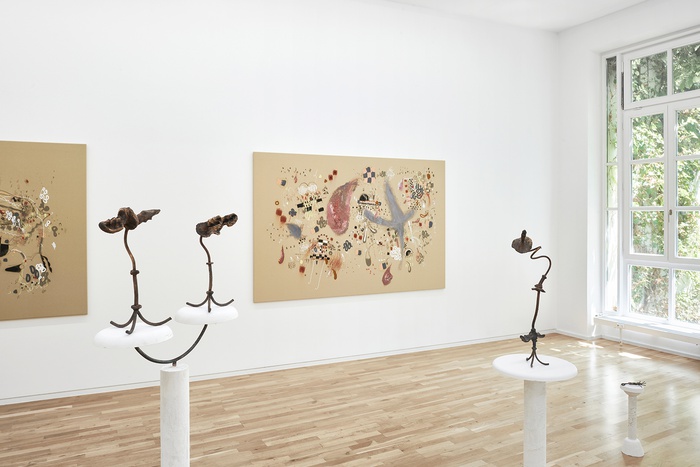
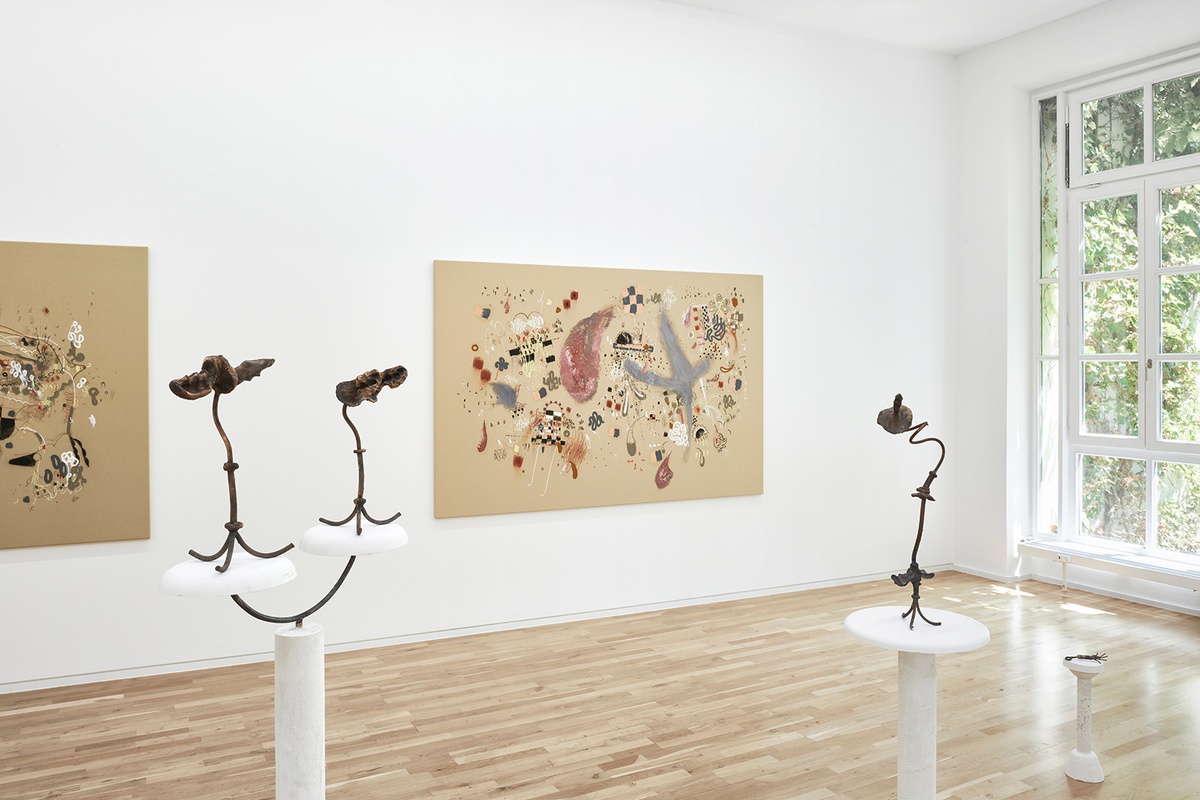
Exhibition view, Jahn und Jahn, Munich, 2023
oil, charcoal, red chalk on canvas
150 x 230 cm
Exhibition view, Jahn und Jahn, Munich, 2023
Exhibition view, Jahn und Jahn, Munich, 2023
Exhibition view, Jahn und Jahn, Munich, 2023
Exhibition view, Jahn und Jahn, Munich, 2023
oil, charcoal, red chalk on canvas
260 x 190 cm
Exhibition view, Jahn und Jahn, Munich, 2023
oil, charcoal, red chalk on canvas
150 x 150 cm
Exhibition view, Jahn und Jahn, Munich, 2023
Exhibition view, Jahn und Jahn, Munich, 2023
oil, charcoal, red chalk on canvas
80 x 60 cm
Exhibition view, Jahn und Jahn, Munich, 2023
Opening: Thursday, July 13, 2023, 6–9pm
“Bauen Brauen Sauen” (Build Brew Booze): in Lion Feuchtwanger’s satirical novel “Success,” published in 1930 with the subtitle “Three Years in the Life of a Province,” that is the caustically comic motto by which Munich lives. The author unfolds a literary panopticon of the perfidy of reactionary idealists and nationalist demagogues in the Bavarian capital in the late 1920s. Alexi Tsioris picks up on Feuchtwanger’s formula with its devastatingly mocking use of local color, extracts the words from their original context, and lets them stew and fester in the juices of his own creative actions and processes.
A kind of seething inhabits his drawing-based paintings and works of sculpture as well as paper works, a constant rumbling, an inherent unrest that finds expression in pastose accumulations of colors and forms as well as jittery graphical signifiers. Aggregation, condensation, and disintegration are central principles of his artistic practice. Under subliminal pressure to escalate, motifs and themes recur in varied form and build up in fugue-like compositions. Process plays a key role: Tsioris lets figures come into being that are neither straightforward nor unequivocal. Physiognomies obtrude upon his visual language and, as it were, drift off into invisibility. This also explains the characteristic presence of physical phenomena in his works, despite their considerable abstraction. Even when the human figure vanishes from the pictures, certain integral shapes derive their bodily quality from the substance of color.
In comparison to earlier works by the artist, his new pictures evince a growing concentration on essential elements and motifs. Paint matter squeezed directly from the tube or applied with syringes to the unprimed back of the canvas reveals the kinship with graphical processes. The limitation to a select few techniques establishes a dialectical correspondence between contradictory materialities: fat oil paints and dusty-dry black charcoal as well as red chalk. Oily shadows partially accrete in irregularly shaped glorioles around formations with an organic air, enhanced by fan-like, scaly, and meandering structures and lines, tokens that suggest graphic characters, and hatchings. Other pictures show complete figures, supplemented by an abundance of ornaments and enclosed by framing elements that might be a kind of shelter and demarcate pseudo-spaces designed in no small part to confine and condense restless energies that might get out of hand. All the various elements in Tsioris’s work coalesce in a fictional alphabet of archaic signifiers. Not unlike the figural impulses, which are sometimes preserved in the works as no more than recollections, these emblems elude their trajectory on the pictorial surface toward a decodable language. The compositions the artist creates in this manner might also be read as reductions, brewed out of extracts from his own vocabulary.
Tsioris’s sculptures are the products of an unmediated will to expression. Wax impressions of grab and bite marks, cast in aluminum or bronze and partially patinated, are gathered in a playfully additive process to form vegetal and primeval objects. The handprint and the accumulation of ephemeral graphical traces in a lexicon also return as central impulses in the artist’s monotypes. Employing a process of his own devising, he produces unique prints in which vestiges of other compositions persist in palimpsestic fashion. In the most radical manifestation of this procedure, extraordinarily delicate graphical ramifications are layered to form a compressed yet gossamer tangle of lines. Showing the literal imprint of the hand’s “insistence,” these paper works bear paradigmatic witness to their reducibility to their origin in the spontaneous act of mark-making.
Alexi Tsioris (*1982 in Athens) lives and works in Munich. 2002–2008 Akademie der Bildenden Künste, Munich; 2009 DAAD fellowship, Tokyo; 2011 Art Prize of the Bayerische Akademie der Schönen Künste, Munich; 2019 Bayerischer Kunstförderpreis, Bildende Kunst (Bavarian Arts Prize, Fine Arts). Selected Exhibitions: 2022 & 2020 Livie Fine Art, Zurich (s); 2022 Encounter & Richeldis Fine Art, London (s); 2021 Arnoldi-Livie, Munich (s); 2020 BBK, Galerie der Künstler, Munich; 2019 Jahn und Jahn, Munich (s); 2018 Kunstpavillon Alter Botanischer Garten, Munich (s); 2018 Artothek & Bildersaal, Munich (s); 2017 Galerie Jahn Baaderstrasse, Munich (s); 2017 Salon International Des Arts Festival De Bobanisme, Paris; 2015, 2009 & 2006 Galerie Christine Mayer, Munich (s); 2015 Kunstpavillion, Innsbruck; 2015 Kunstarkaden, Munich; 2015 Rathausgalerie, Munich; 2014 Klosterkirche, Traunstein (s); 2014 V8 Plattform, Karlsruhe; 2013 Galerie Weltraum, Munich (s); 2013 Kunstverein, Weiden; 2012 Akademie der Schönen Künste, Residenz, Munich (s); 2009 Istanbul Biennial; 2009 Kunstverein, Munich; 2006 Golden Pudel Club, Hamburg. (s… solo)